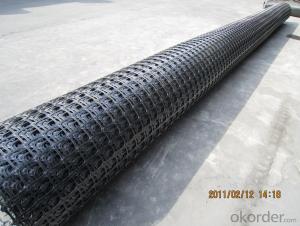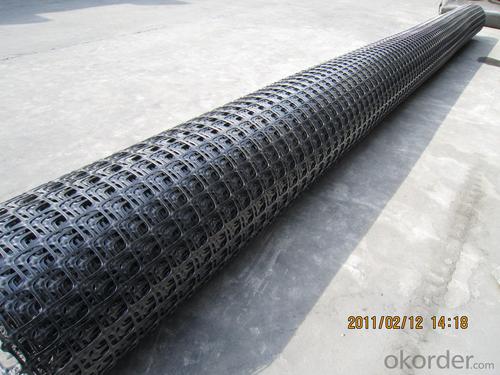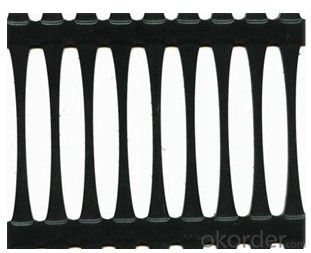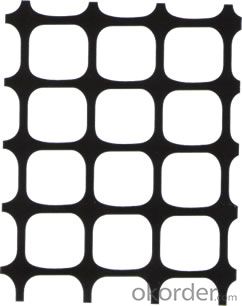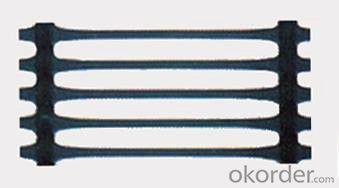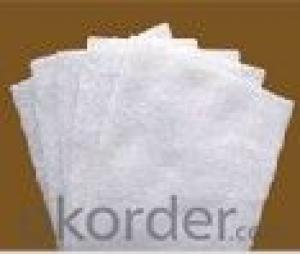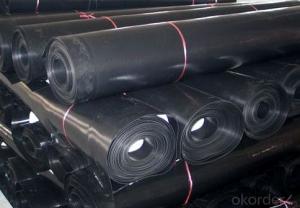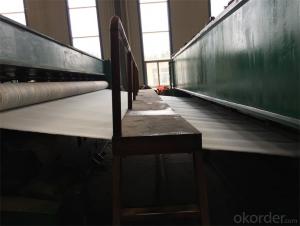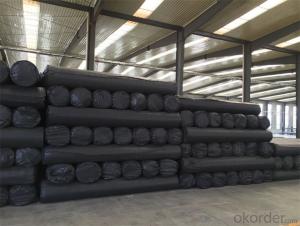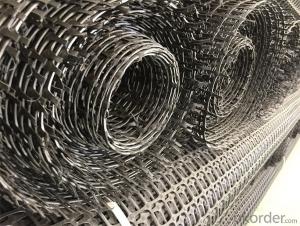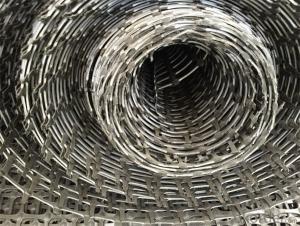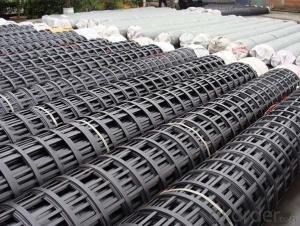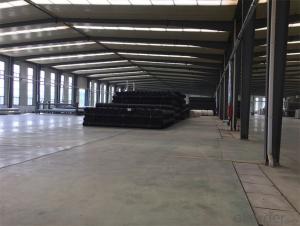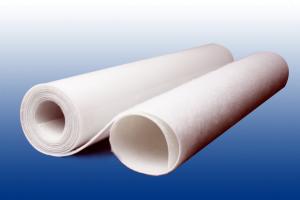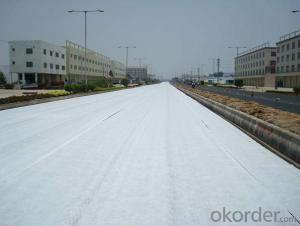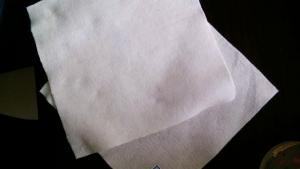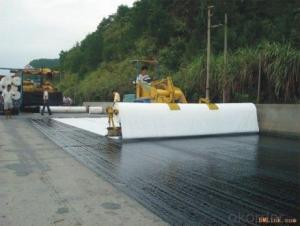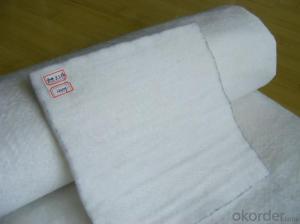Strata Geotextile Polyester Geogrid PES Geogrid PET Geogrid Coated with Water Soluble PVC
- Loading Port:
- Qingdao
- Payment Terms:
- TT OR LC
- Min Order Qty:
- 10000 m²
- Supply Capability:
- 300000 m²/month
OKorder Service Pledge
OKorder Financial Service
You Might Also Like
Description Of Polyester Geogrid PES Geogrid PET Geogrid Coated With Water Soluble PVC:
Polyester Geogrid adopts high strength, high modulus, and low shrinkage twisting industrial polyester fiber as raw material. It is warp knitted with oriented structure and in the condition of no bending among warp and weft direction. Its crossing points are bundled and bended together by high strength long polyester fiber forming tough conjunction. Then it forms into mesh size product after coated with high quality oil or water-soluble PVC which improves its strength, various technical standards and gives full play of its mechanical property.
Main Features of Polyester Geogrid PES Geogrid PET Geogrid Coated With Water Soluble PVC:
1. High strength, high modulus and low elongation.
2. Aging resistance and high tensile strength.
3. Pre-designed and easily combing with gravel and soil.
Specifications of Polyester Geogrid PES Geogrid PET Geogrid Coated With Water Soluble PVC:
Main specification:
1,High strength polyester geogrid Uniaxial Warp-knitting
2,High strength polyester geogrid Biaxial Warp-knitting
Polyester Geogrid Technical parameter:
1,Uniaxial geogrid
Performance/specification | PETG 35-20 | PETG 55-20 | PETG 60-30 | PETG 70-30 | PETG 80-30 | PETG 100-30 | PETG 120-30 | |
Stretching ratio %≤ | 13 | 13 | 13 | 13 | 13 | 13 | 13 | |
Intensity | Vertical | 35 | 55 | 60 | 70 | 80 | 100 | 120 |
KN/m | Horizontal | 20 | 20 | 30 | 30 | 30 | 30 | 30 |
Mesh size mm | 25*25 40*40 50*50 | |||||||
Width m | 1-6 | 1-6 | 1-6 | 1-6 | 1-6 | 1-6 | 1-6 | |
Performance/specification | PETG-150-30 | PETG-200-30 | PETG-260-30 | PETG-300-30 | PETG-350-30 | PETG-400-50 | |
Stretching ratio %≤ | 13 | 13 | 13 | 13 | 13 | 13 | |
Intensity | Vertical | 150 | 200 | 260 | 300 | 350 | 400 |
KN/m | Horizontal | 30 | 30 | 30 | 30 | 30 | 50 |
Performance/specification | PETG-500-50 | PETG-600-50 | PETG-700-50 | PETG-800-50 | PETG-900-50 | PETG-1000-50 | |
Stretching ratio % | 13 | 13 | 13 | 13 | 13 | 13 | |
Intensity | Vertical | 500 | 600 | 700 | 800 | 900 | 1000 |
KN/m | Horizontal | 50 | 50 | 50 | 50 | 50 | 50 |
Mesh size mm | 25*25 40*40 50*50 | ||||||
Width m | 1-6 | 1-6 | 1-6 | 1-6 | 1-6 | 1-6 | |
2,Biaxial geogrid:
Performance/specification | PETG 30-30 | PETG 40-40 | PETG 50-50 | PETG 80-80 | PETG 100-100 | PETG 120-120 | PETG 140-140 | |
Stretching ratio %≤ | 13 | 13 | 13 | 13 | 13 | 13 | 13 | |
Intensity | Vertical | 30 | 40 | 50 | 80 | 100 | 120 | 140 |
KN/m | Horizontal | 30 | 40 | 50 | 80 | 100 | 120 | 140 |
Mesh size mm | 25*25 40*40 50*50 | |||||||
Width m | 1-6 | 1-6 | 1-6 | 1-6 | 1-6 | 1-6 | 1-6 | |
Performance/specification | PETG 150-150 | PETG- 200-200 | PETG 260-260 | PETG 300-300 | PETG 350-350 | PETG 400-440 | |
Stretching ratio %≤ | 13 | 13 | 13 | 13 | 13 | 13 | |
Intensity | Vertical | 150 | 200 | 260 | 300 | 350 | 400 |
KN/m | Horizontal | 150 | 200 | 260 | 300 | 350 | 400 |
Performance/specification | PETG 500-500 | PETG 600-600 | PETG 700-700 | PETG 800-800 | PETG 900-900 | PETG 1000-100 | |
Stretching ratio % | 13 | 13 | 13 | 13 | 13 | 13 | |
Intensity | Vertical | 500 | 600 | 700 | 800 | 900 | 1000 |
KN/m | Horizontal | 500 | 600 | 700 | 800 | 900 | 1000 |
Mesh size mm | 25*25 40*40 50*50 | ||||||
Width m | 1-6 | 1-6 | 1-6 | 1-6 | 1-6 | 1-6 | |
Applications of Polyester Geogrid PES Geogrid PET Geogrid Coated With Water Soluble PVC:
1. Strengthening soft roadbed of high-class roads and high speed railways, separating different
subgrade soil material.
2. Using in reclamation engineering, dam, landslides and retaining wall.
3. Enhancing various roadbeds.
4. Strengthening soft roadbed of airport.
IMages of Polyester Geogrid PES Geogrid PET Geogrid Coated With Water Soluble PVC:
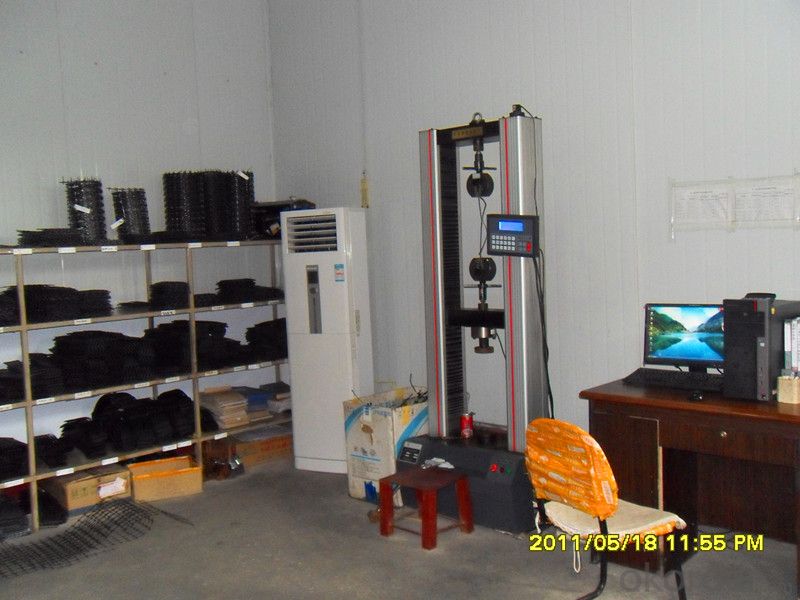
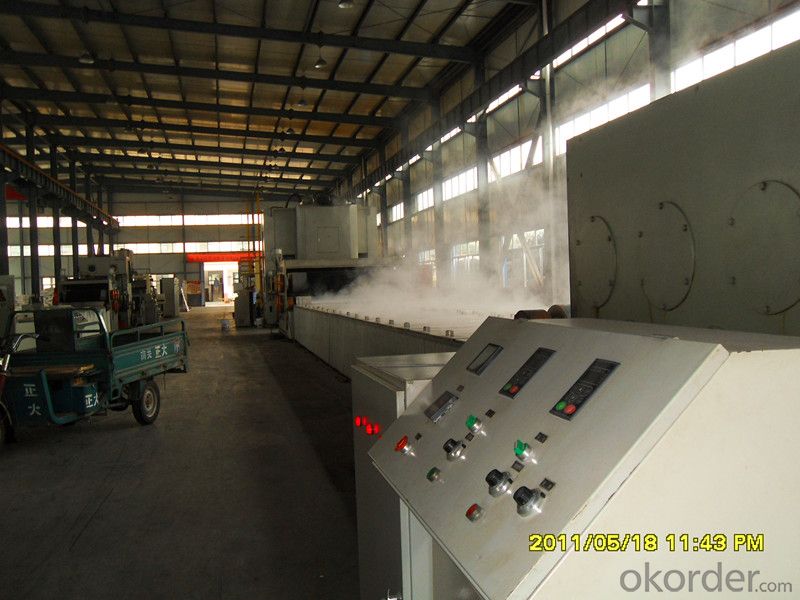
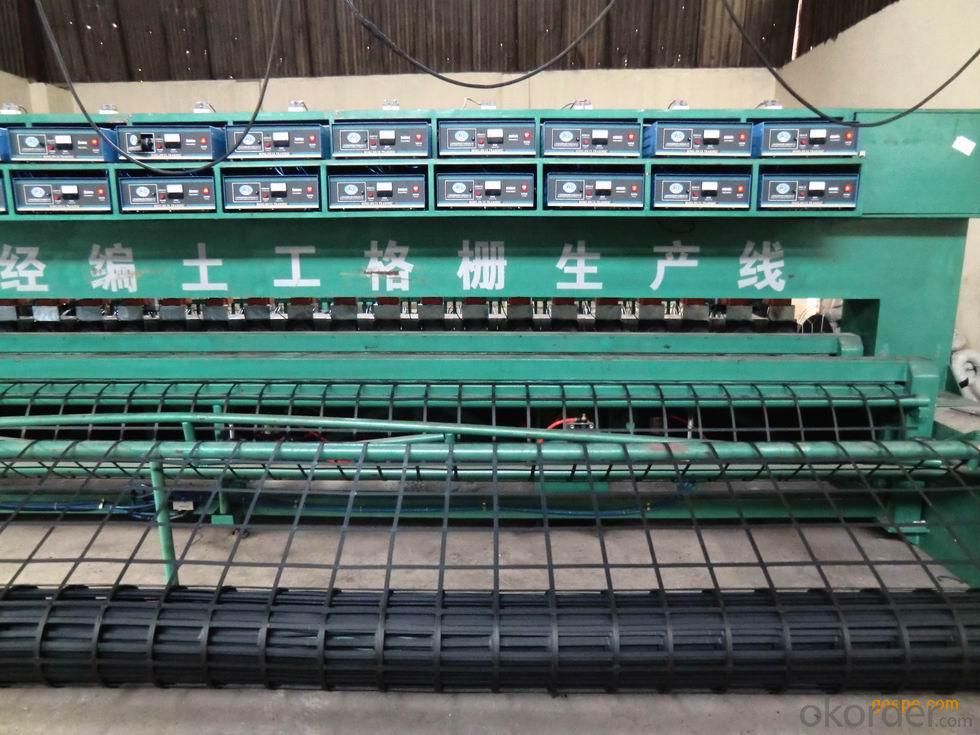
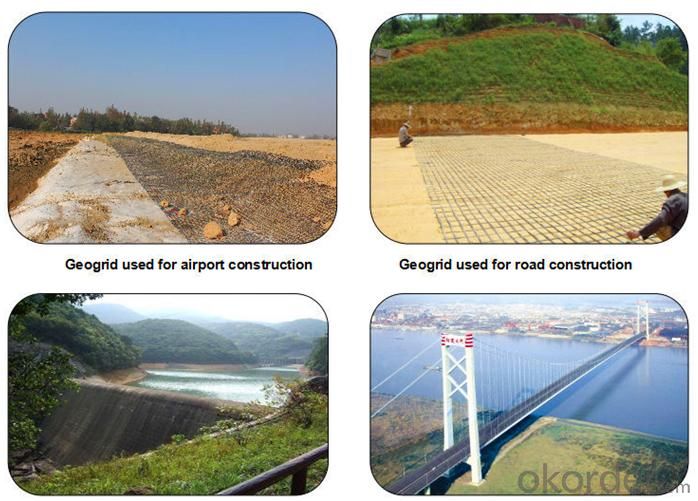
FAQ:
1. Do you supply free samples for customers?
Yes,we will supply free samples for you.Please send your address for us.
2. How Many years experience do you have?
We have been exported to more than 20 countries in the past 15 years.
3. How long do we usually reply your request?
We always reply our customer within 24 hours.
- Q: What are the advantages of using geotextiles in stormwater management?
- Geotextiles offer several advantages in stormwater management, including improved filtration and sediment retention, increased soil stabilization, and enhanced water infiltration rates. They help to reduce erosion and prevent sediment from entering water bodies, thus improving water quality. Geotextiles also provide support to vegetation and promote vegetative growth, contributing to the overall sustainability and effectiveness of stormwater management systems.
- Q: Can geotextiles be used in wastewater treatment applications?
- Yes, geotextiles can be used in wastewater treatment applications. They are commonly used as a filtration and separation medium in various stages of the treatment process, such as in sedimentation tanks, sludge dewatering, and effluent filtration. Geotextiles help to retain solids, prevent clogging, and enhance the overall efficiency of wastewater treatment systems.
- Q: Geotextile how to construction?
- There are specialized construction teams
- Q: Can geotextiles be used in mining and tailings management applications?
- Yes, geotextiles can be used in mining and tailings management applications. Geotextiles are often utilized to separate and reinforce soil layers, provide drainage, and prevent erosion in mining and tailings management. They help in controlling water flow, stabilizing slopes, and enhancing the overall performance and sustainability of these applications.
- Q: What are the standards and specifications for geotextiles?
- Geotextiles are specifically engineered fabrics used in civil engineering projects to enhance soil stability, filtration, drainage, and separation. The standards and specifications for geotextiles are established by various organizations, including the International Organization for Standardization (ISO) and the American Society for Testing and Materials (ASTM). These standards outline the testing methods and performance requirements for geotextiles in terms of their physical properties, strength, durability, and resistance to environmental factors. These standards ensure that geotextiles meet the necessary quality and performance criteria for their intended applications, promoting consistency and reliability in the construction industry.
- Q: How do geotextiles contribute to environmental sustainability?
- Geotextiles contribute to environmental sustainability by providing erosion control, improving soil stability, and promoting vegetation growth. They help prevent soil erosion by acting as a barrier against the forces of wind and water, reducing the sedimentation of water bodies and preserving the quality of nearby ecosystems. Geotextiles also enhance soil stability by reinforcing weak soils, reducing the need for extensive excavation or replacement. Moreover, they facilitate the establishment of vegetation, promoting biodiversity and restoring natural habitats. Overall, geotextiles play a crucial role in mitigating environmental degradation and supporting sustainable land management practices.
- Q: Can geotextiles be used in underground storage tank installations?
- Yes, geotextiles can be used in underground storage tank installations. Geotextiles are often used as a protective barrier between the tank and the surrounding soil to prevent contamination and provide stability.
- Q: How do geotextiles help in reducing the settlement of structures on soft soils?
- Geotextiles help in reducing the settlement of structures on soft soils by providing a stable and reinforced foundation. They act as a barrier between the soil layers, distributing the load evenly and preventing excessive settlement. Additionally, geotextiles improve the soil's drainage and filtration capabilities, allowing water to permeate and preventing waterlogging, which can further contribute to settlement.
- Q: How do geotextiles help in reducing the risk of slope failures?
- Geotextiles help in reducing the risk of slope failures by providing reinforcement and stability to the soil. They are used to reinforce weak soils, improve their shear strength, and prevent erosion. By acting as a barrier, geotextiles help to distribute the load and reduce the stress on the slope, minimizing the chances of failure. Additionally, they also allow for proper drainage, reducing water pressure and preventing saturation of the soil, which is a common cause of slope failures. Overall, geotextiles play a crucial role in enhancing the stability and safety of slopes.
- Q: How do geotextiles help with erosion control in riverbanks?
- Geotextiles help with erosion control in riverbanks by providing a protective barrier that prevents soil erosion, while allowing water to flow through. They stabilize the soil, preventing it from being washed away by the force of the water, and also promote the growth of vegetation, which further helps to anchor the soil and protect against erosion.
Send your message to us
Strata Geotextile Polyester Geogrid PES Geogrid PET Geogrid Coated with Water Soluble PVC
- Loading Port:
- Qingdao
- Payment Terms:
- TT OR LC
- Min Order Qty:
- 10000 m²
- Supply Capability:
- 300000 m²/month
OKorder Service Pledge
OKorder Financial Service
Similar products
Hot products
Hot Searches
Related keywords
